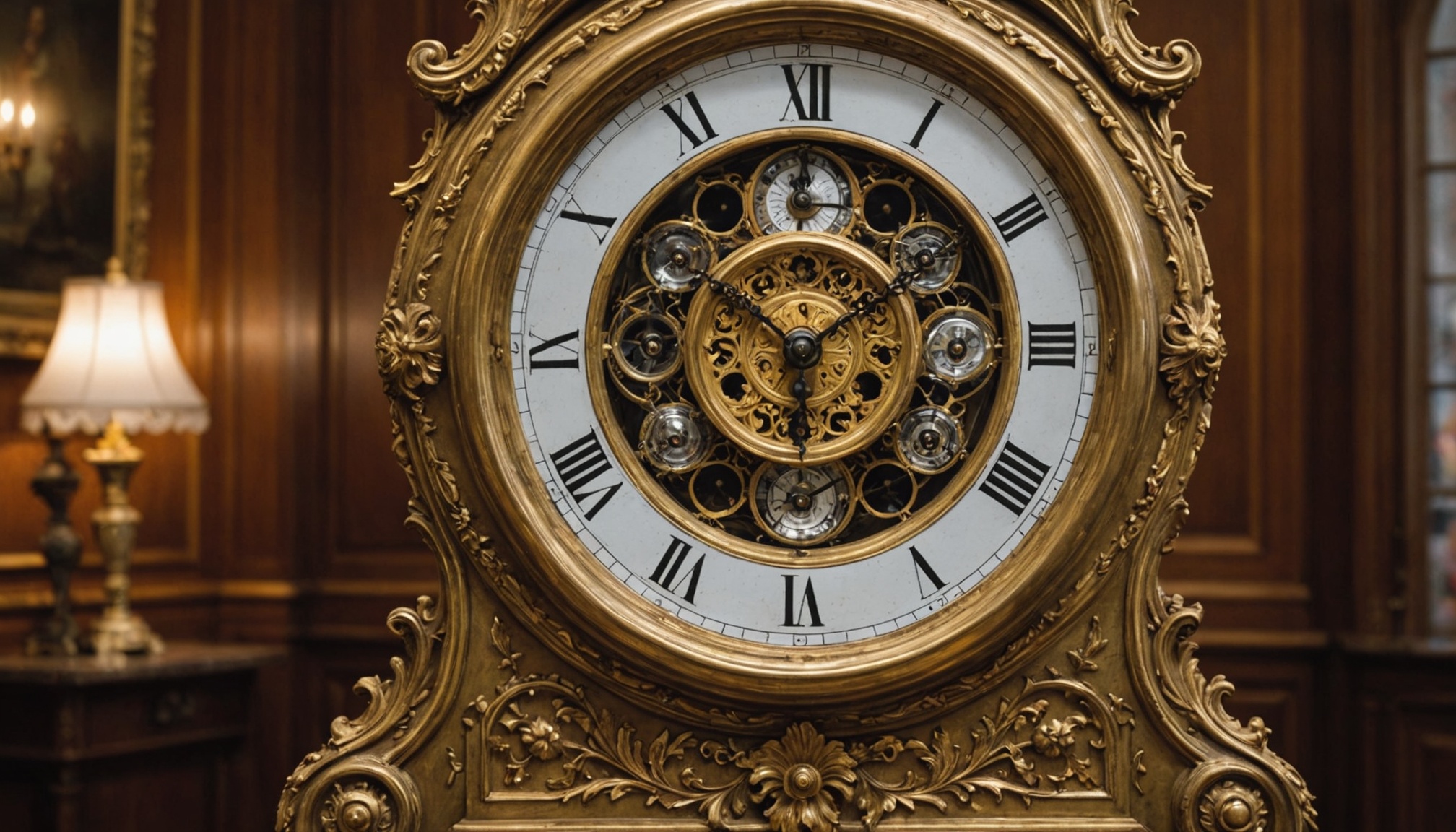Discover the allure of 19th century French clocks, masterpieces that blend artistry with functionality. These timepieces reflect intricate craftsmanship and rich history, showcasing styles from Rococo elegance to Neoclassical grandeur. Whether you’re a collector seeking the perfect addition or simply captivated by their beauty, this exploration highlights renowned makers and essential buying tips. Embrace the charm of these antiques and understand why they remain timeless treasures.
Historical Context of 19th Century French Clocks
The 19th century french clocks era is renowned for profound transformations in timekeeping art. During this dynamic period, French clocks emerged as pivotal elements of both functional use and artistic expression. Fueled by innovations from the Industrial Revolution, clock-making technology evolved, allowing for greater precision and diversification in designs. The transition from handcrafted to industrial methods brought about a revolution in the production and craftsmanship of timepieces.
In the same genre : Top thermoses to elevate your outdoor and office experiences
French clocks of this era were not merely instruments; they became an essential facet of cultural history, marking the era’s artistic zenith. Styles varied from the opulent Rococo and Neoclassical, to the eclectic designs popular in the Belle Époque. Ironically, this mechanization did not diminish artistry but enhanced the finesse and ornateness of styles available.
Master clockmakers such as Jean-Simon Deverberie and Louis Moinet highlighted their craftsmanship, creating pieces that drew inspiration from mythological and allegorical themes. These exquisite designs capture the grandeur of the age and remain coveted collectibles today for their historical significance and aesthetic appeal, reflecting the era’s duality of artistry and innovation.
Also to discover : Essential Guide to Retrofitting a UK Bungalow for Optimal Wheelchair Accessibility
Styles and Designs of 19th Century French Clocks
Rococo and Neoclassical Styles
The Rococo style of French clocks, renowned for its playful and ornate design, flourished during the reign of Louis XV. Ornate clock styles characterized by assiduous curves and intricate detailing were the hallmark. These pieces often featured decorative elements of French clocks, like gilded bronze and porcelain, exemplifying both elegance and craftsmanship.
Transitioning to the Neoclassical style, initiated under Louis XVI and Napoleon, the design shifted towards symmetry and simplicity, reflecting the period’s architectural trends. This era emphasized straight lines and iconic designs in French horology, incorporating classical art influences.
Belle Époque Designs
The Belle Époque period introduced eclectic trends in French clock styles. It merged decorative elements of previous eras with more modern aesthetics. This style often embraced intricate engravings and a harmonious blend of materials such as brass and marble, showcasing the craftsmanship of 19th-century clocks.
Key Features and Decorative Elements
Distinctive features in this era included ornate clock styles characterized by allegorical and mythological themes. Clock-making techniques in France during this time emphasized both functionality and artistry, resulting in timepieces revered for their dual utility and decorative appeal. Each clock represents a unique fusion of artistry and innovation, contributing to the timeless allure of French horology.
Notable Clockmakers and Their Contributions
Renowned Clockmakers to Know
Among the famous French clockmakers of the 19th century, Jean-Simon Deverberie and Louis Moinet stand out. Known for their exceptional craftsmanship, these artisans made significant contributions to the field. Deverberie’s works often display elaborate designs featuring allegorical subjects. Moinet, recognized for his technical innovations, introduced new clock-making techniques in France that elevated timekeeping precision.
Innovative Techniques in Clock-Making
Craftsmanship of 19th century clocks underscores an era marked by technological advancement and artistic flair. French clockmakers of this time embraced intricate movements and complex mechanisms, utilizing cutting-edge techniques. Innovations such as Moinet’s chronometer escapement showcased the era’s commitment to enhancing accuracy and reliability. The decorative elements of antique French clocks, such as ornate brass and gilded embellishments, reflect the emphasis on artistic elegance in 19th century clock designs.
Legacy of Clockmakers in French Horology
The legacy of these notable 19th century clock manufacturers is evident in the persistent admiration and value placed on their creations today. French horology continues to be celebrated for its historical significance and artistic merit. Collectors and enthusiasts still seek out these vintage French timepieces, appreciating the union of utility and aesthetics that defines this timeless era in clock-making.
Collecting and Caring for 19th Century French Clocks
Essential Tips for Collectors
When embarking on a journey to collect antique French clocks or 19th century French mantel clocks, it’s important to focus on genuine pieces. Identifying authentic French clocks requires an understanding of maker’s marks and the nuances of styles of French clocks from different periods. Pay close attention to the craftsmanship of 19th-century clocks, the decorative elements of French clocks, and unique features of 19th-century clocks.
Understanding Clock Valuation and Market Trends
Valuing antique clocks involves assessing both aesthetic qualities and historical significance of French clocks. Market trends for French timepieces can fluctuate, making it crucial to stay informed on current pricing and demand. Auctions for 19th century clocks and French clock exhibitions can provide insights into shifts in market values and desirable features.
Restoration and Maintenance Practices
The restoration of 19th century clocks is a delicate process, involving specific clock-making techniques in France. Regular care for vintage clocks, including cleaning and repairs, is essential to maintaining their value and ensuring long-term functionality. Opting for original parts vs. replicas in antique clocks can also impact monetary worth and historical integrity.











